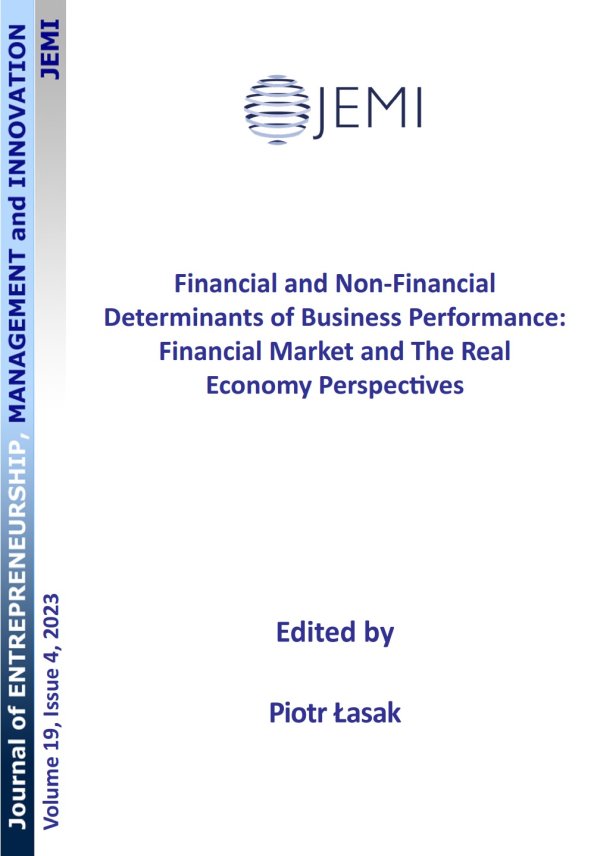Karikari Amoa-Gyarteng, Research Fellow, University of Johannesburg, Auckland Park Kingsway Campus, Corner Kingsway and University Road, Auckland Park, South Africa, e-mail: This email address is being protected from spambots. You need JavaScript enabled to view it. 
Shepherd Dhliwayo, Ph.D, Associate Professor, University of Johannesburg, Auckland Park Kingsway Campus, Corner Kingsway and University Road, Auckland Park, South Africa, e-mail: This email address is being protected from spambots. You need JavaScript enabled to view it. 
Abstract
PURPOSE: Small and medium enterprises (SMEs) play a vital role in the economic growth of emerging economies. However, many of these businesses fail in their early stages, making it important to investigate factors that influence their short-term solvency. This study aims to examine the impact of capital structure and profitability on the short-term solvency of nascent SMEs in Ghana, building on the liability of newness framework. METHODOLOGY: Data for this study were obtained from the Ghana Enterprises Agency, focusing on nascent SMEs that are five years old or less. Financial statements were used to measure the dependent and independent variables, and regression analysis was employed to measure the variance in short-term solvency accounted for by profitability and capital structure. FINDINGS: This study demonstrates that financing decisions and financial performance act as crucial mitigating factors for the potential risks of default and failure faced by nascent SMEs. Notably, the study finds that an appropriate balance between debt and equity financing raises the working capital ratio and thus reduces the liability of newness, which is a major challenge faced by nascent SMEs. This highlights the relevance of the trade-off theory, which recommends a combination of debt and equity financing to leverage the advantages of both sources of capital, in the context of nascent SMEs. The intricate relationship between profitability and short-term solvency in nascent SMEs was revealed in this study. The findings illustrate that while return on equity exhibits a direct impact on the short-term solvency of such SMEs, return on assets manifests an opposing effect. Furthermore, net profit after tax demonstrates only a nominal influence on the short-term solvency of nascent SMEs in Ghana. IMPLICATIONS: The implications of our study are far-reaching, particularly within the context of Ghana’s nascent SMEs. To ensure short-term viability and facilitate a smooth transition to maturity, nascent SMEs must strive for an optimal debt-to-equity ratio. This critical insight underscores the importance of managing the capital structure of nascent SMEs, as the improper balance between debt and equity may impede the achievement of short-term solvency and, in turn, hinder the long-term success of the firm. Additionally, while nascent SMEs must prioritize maintaining liquidity to safeguard against unforeseen contingencies, this comes at a high cost in terms of missed opportunities that could significantly enhance the company’s long-term return on assets. Thus, it is crucial for small business owners in Ghana to strike a balance between short-term solvency and return on assets by engaging in prudent financial management practices. Overall, our study provides valuable theoretical and practical implications for nascent SMEs in Ghana, emphasizing the need to optimize their capital structure and maximize their long-term return on assets while safeguarding their short-term liquidity. ORIGINALITY AND VALUE: The study’s conceptualization that capital structure and profitability relate significantly to short-term solvency and, therefore, buffers the liability of newness is novel. Second, by showing that the trade-off theory’s tenets are relevant to the short-term solvency of nascent SMEs, the study demonstrates that capital structure theories apply equally to SMEs, just as much as large firms.
Keywords: capital structure, profitability, liability of newness, liquidity, new firm survival, SMEs, economic growth, emerging economies, short-term solvency






